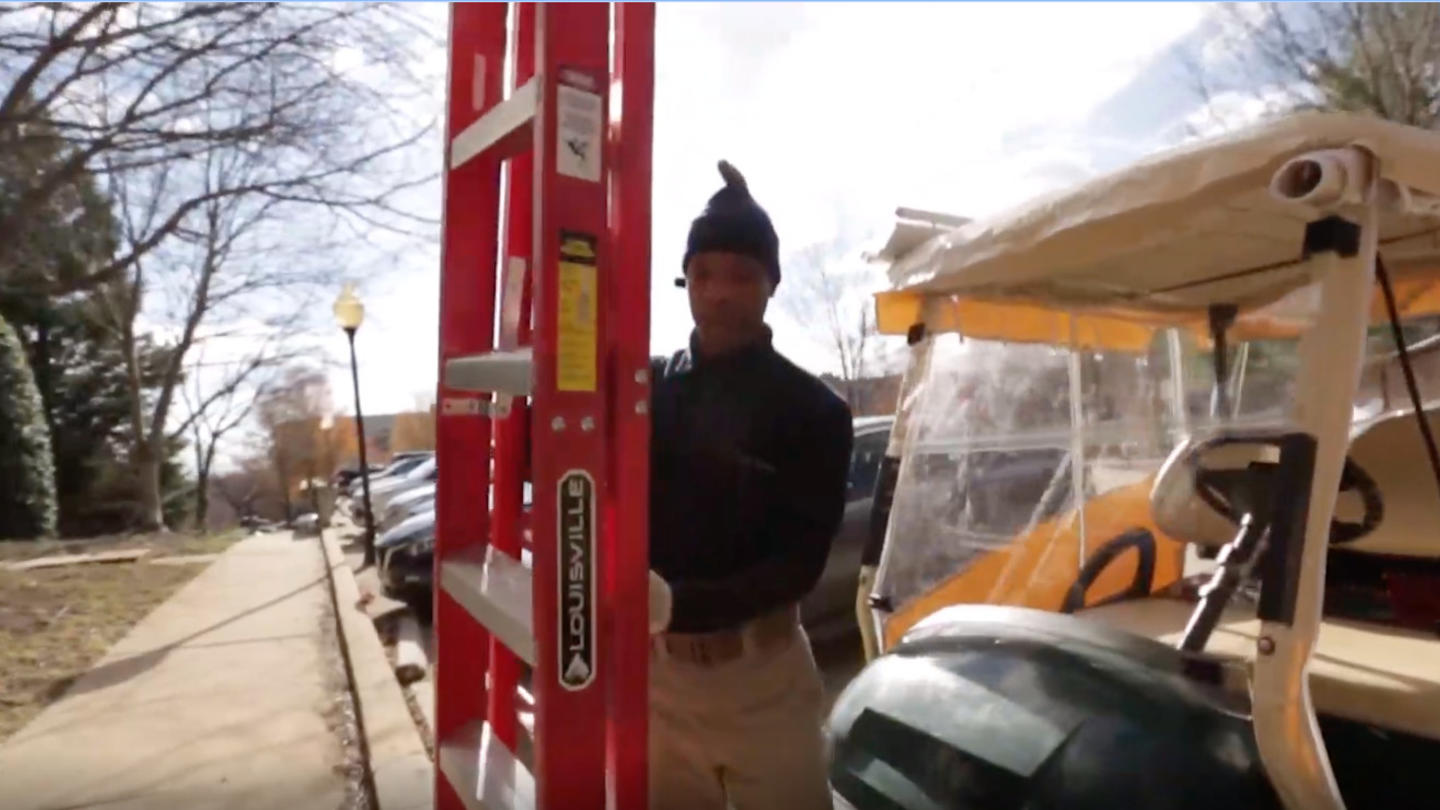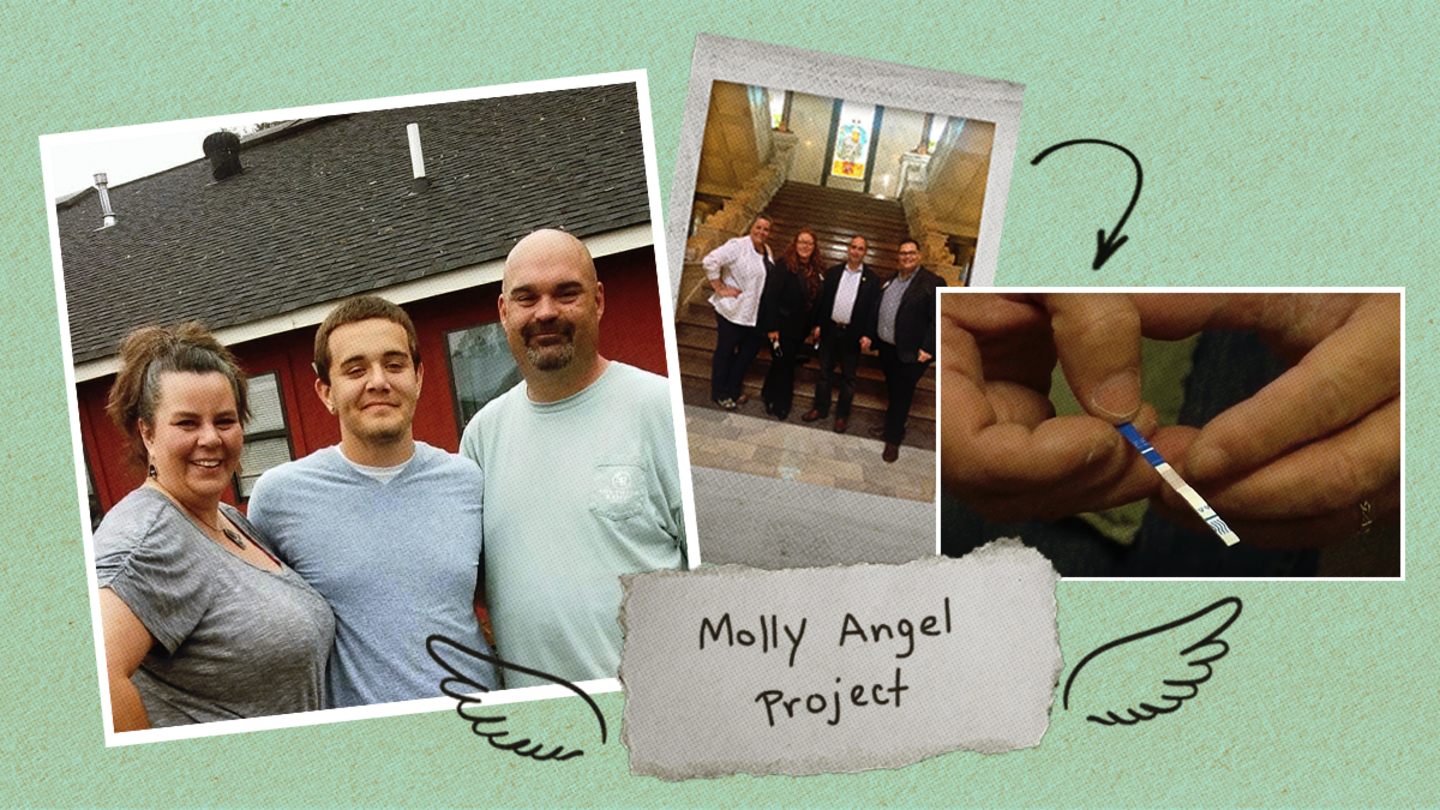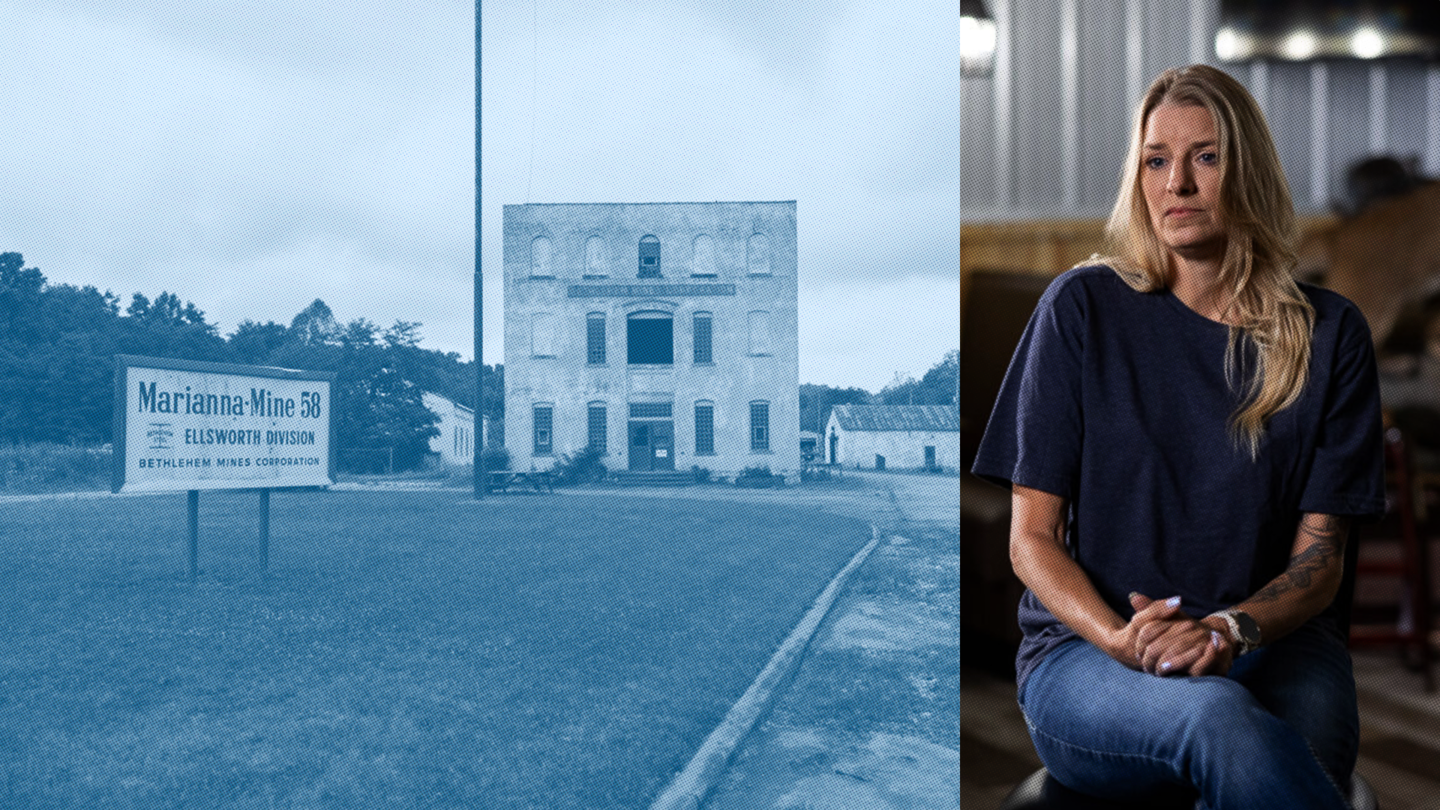Homelessness is a circumstance, not an identity. When more than 60 percent of Americans live paycheck-to-paycheck with less than $1,000 in savings, it's not as surprising to know that three million individuals end up sleeping on a couch, in a shelter or in a car at some point in a year.
Stable housing and consistent income are pillars of self-sufficiency. Yet it's difficult to have one without first having the other. Applying for a job without an address or cell phone number, for example, is a red flag to potential employers—a blunt and basic disadvantage.
Meanwhile, the multifamily housing industry is growing at an unprecedented rate and struggling to attract, hire, and train quality employees quickly enough. The problem is compounded by a dismal 50 percent employee retention rate industry-wide.
In 2014, Chris Finlay, owner of Middleburg Communities, began to reconcile these realities by launching Shelters to Shutters. Though he led the way by leveraging his own company, he and Shelters to Shutters are looking to get the entire multifamily apartment industry involved—an incredible example of industry coming together to solve an intractable issue from the bottom up.
"The coolest thing about Shelters to Shutters is, in fact, that it came out of the industry," says Doug Bibby, president of the National Multifamily Housing Council. "The fact that we can support an organization that is putting employees into our business on the ground makes a lot of sense and I want to see more and more companies come in and do it—it's the right thing to do."
As an apartment owner and operator, we have housing AND jobs. It's that unique combination that's so impactful.
Chris Finlay, Managing Partner, Middleburg Communities
Partnering with a local shelter with extensive job placement and case management services, Shelters to Shutters was able to source qualified candidates and match them with multifamily apartment partners to fill vacancies as leasing agents, maintenance technicians, and groundskeepers. Odessa Moore was the first. For her, domestic violence had led to job loss and then eviction, finally sending she and her sixteen-month-old twins desperate to a shelter. Stable and employed for as long as she could remember, Odessa never expected to be homeless. "It's hard to admit that, and it's even hard for me to say that word 'shelter' because I've always been stable," she confesses.
It was her social worker who submitted Odessa's resume to Shelters to Shutters, who then reached out to a local property partner with an entry-level position to fill. With the job came keys—a beautiful two-bedroom apartment that she could easily afford with her new salary. Within a year Odessa was promoted from administrative assistant to leasing agent, where for two years in a row she was the only employee to receive a perfect score from the secret shoppers group that rates customer service and effectiveness. When The Solomon Group purchased the property in June 2017 Odessa was further promoted to Assistant Manager, a role she has held for two years now.

Odessa is a shining success and not an anomaly. With everything to lose and life on the line, Shelters to Shutters participants have proven to be invaluable additions to 40 multifamily companies about 143 times over. In six years, Shelters to Shutters hires have shown 87 percent employee retention rate and 89 percent achieve a promotion or wage increase within one year.
This program makes sense for the industry. Not only are we helping individuals who want to work and provide for their families, we are saving industry money by providing vetted, qualified candidates and limiting turnover. Shelters to Shutters is a 'win-win' for any property management company.
Chris Finlay, Managing Partner, Middleburg Communities

Actually circumstantial
Counter to stereotypes, the National Coalition to End Homelessness reports that less than 20 percent of people experiencing homelessness are chronically homeless because of drugs, alcohol, or mental illness—meaning 80 percent of homelessness is circumstantial, arising from other causes like domestic violence and layoffs.
Tony, for example, had worked for the Department of Homeland Security for ten years, but when a family member defaulted on a loan he had cosigned on, it wrecked his credit. When he was laid off soon after, he struggled to afford housing and find full-time employment paying enough to provide for his two daughters.
Through a job training program with SOME (So Others Might Eat), one of the oldest service providers caring for people experiencing homelessness in DC, Tony attended a Shelters to Shutters Hiring Event, where industry partners looking for qualified candidates meet S2S participants for interviews. This event resulted in multiple offers of employment for Tony. Today, he is thriving as a maintenance technician for AvalonBay Communities where he is able to both work and live. On the side, he enjoys volunteering for SOME.
I'm a maintenance technician. I love this company. I love this job. I've got a whole new opportunity to prove myself, to show that I'm not a failure.
Tony Puryear, AvalonBay Communities
After choosing to spend a week sleeping on the streets to learn about the homelessness, Will Harlan, editor of Blue Ridge Outdoors Magazine, said, "The people I met—and the misery they experience—were very real. They were not the lazy alcoholics and drug addicts I'd assumed them to be. They were ordinary people looking desperately for jobs but not getting them, mainly because they had no permanent address. Many had kids whom they called from payphones. All were ashamed of their situation."This is the article that inspired Chris Finlay to do what he did.
It isn't just good for the candidates coming through the program, but it actually enriches every part of our business. There's a direct economic benefit to doing this--our investors love the fact that we're involved in this because everyone would rather invest in a company that does well and does good, rather than one that just does well.
Peter Vilim, Vice Chairman & Co-Founder, Waterton
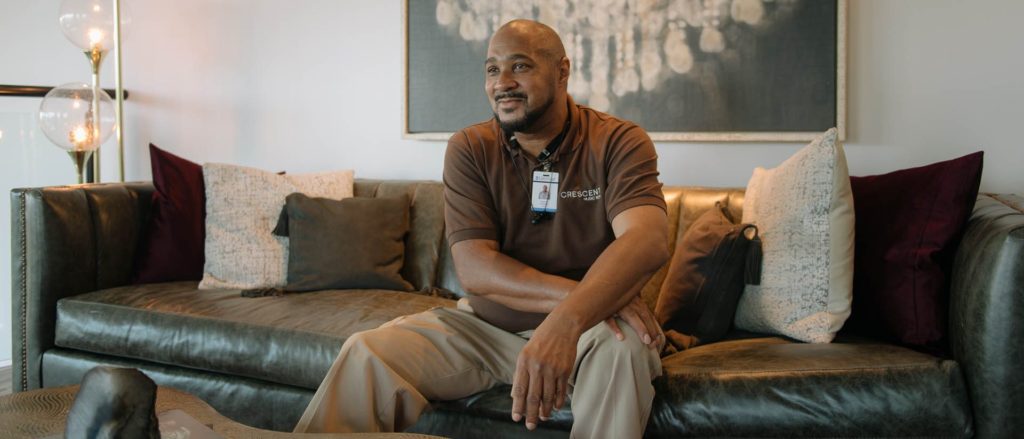
A win-win-win
The process works like this: An individual or family experiencing homelessness connects with a local service provider like a shelter or workforce readiness program, which refers ready-to-work candidates to Shelters to Shutters for deep vetting. The S2S team screens candidates prior to referring them to industry partners, thus creating a curated candidate pool for its multifamily housing partners. These partners then interview S2S candidates for available entry-level positions and offer competitive wages with benefits and discounted housing at the property. Further, the S2S team provides ongoing case management support to ensure long-term success.
With 93 percent of participants not returning to homelessness or re-entering services, Shelters to Shutters was named the designated charity for the National Multifamily Housing Council (NMHC) in both 2017 and 2018, leading to increased visibility for new partnerships and new revenue, and allowing for new hires and the development of new strategy.
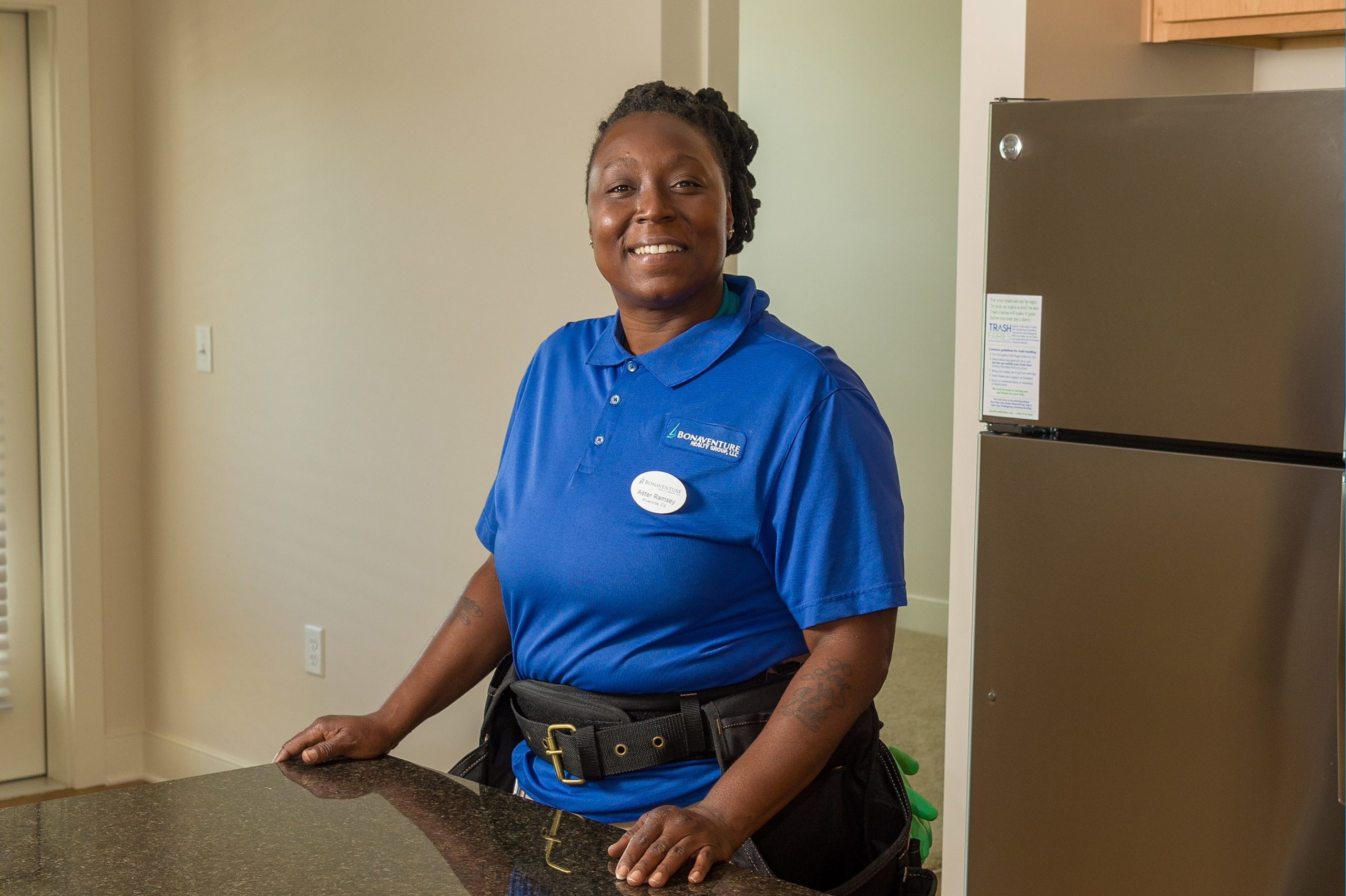
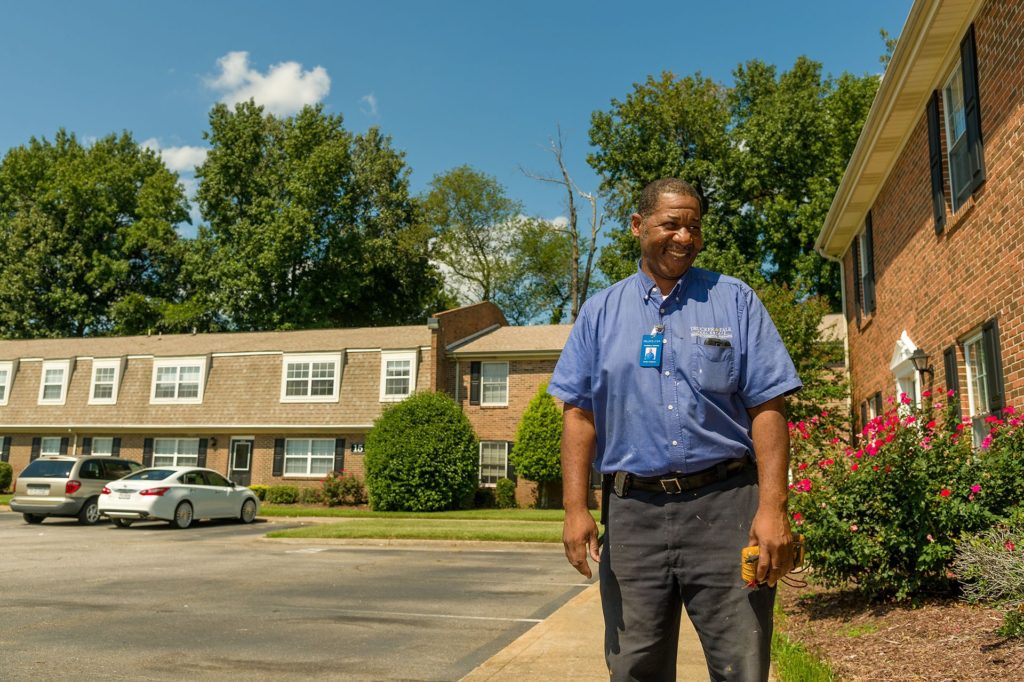
As a result, in 2019 Shelters to Shutters has placed 47 participants in full-time employment at partner properties. In order to enable greater exposure and connection, the team began hosting consistent hiring events, like the one Tony attended, where employment partners meet candidates face-to-face. Hosting eight in 2018 and fifteen in 2019, this is proving to be a new key to successful scaling for S2S.
Each successful S2S participant results in $35,578 in cost-savings to the local community.
"The ability to introduce our candidates in person to industry hiring managers provided a 'seeing is believing' element that broke down the stigma of homelessness and preconceived notions of who these individuals are," says Kristen. "Also, we found that we could accelerate the hiring process and reduce the time those hired and their families experience homelessness."
Now Director of Partnerships, Scott Pitts was one of the organization's earliest hires. Having seen hundreds of candidates through the application process and supporting through their employment, Scott says, "This program is different than any other I have been connected with in over a decade of experience in the Human Services Field. Previously the best I could ever offer was a Band-Aid to the issues facing the people I served. Now the opportunity is there for these individuals to not just end their homelessness but to effect generational change."
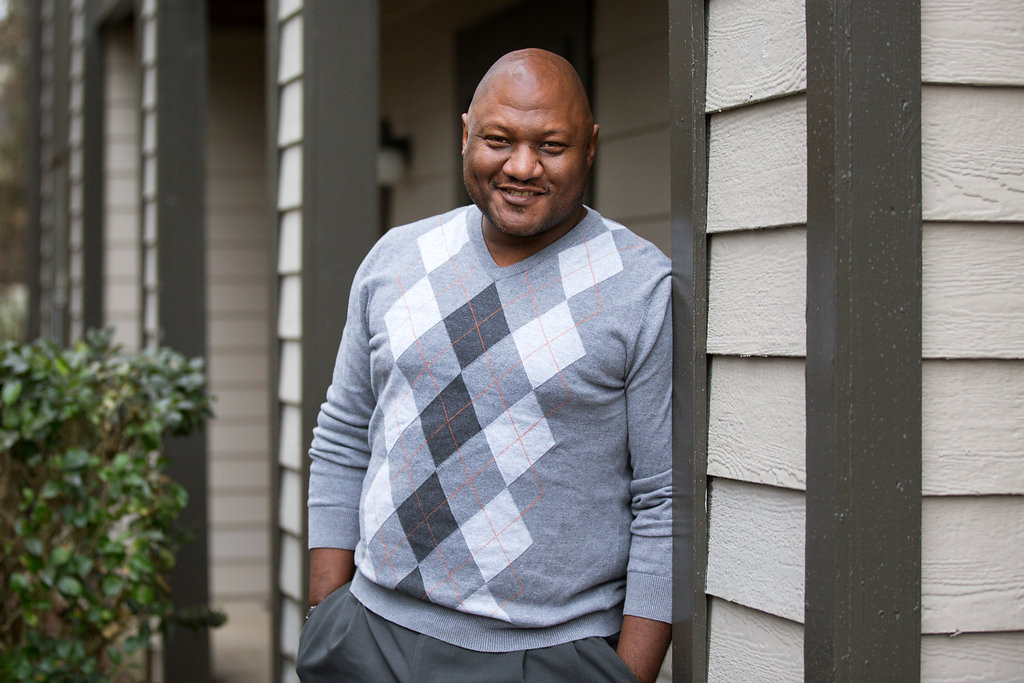
Like EJ. EJ had applied for a leasing position and got the job offer the day before New Year's Eve. "I remember telling him he was going to start the New Year with employment and housing," Scott says. "The excitement, the happiness and most of all, the RELIEF came through the phone as if he was sitting right next to me."
Over the next three years, EJ was consistently one of the top leasing agents for the company, earning rewards and bonuses along the way. He earned enough to pay for his daughter's college education—his 'most proud accomplishment', EJ says. And it didn't stop there—EJ eventually moved on from property management, taking a Vice President of Sales position with a large agency and is working on writing a self-help book encouraging individuals not to lose hope.
"Feedback from early industry partners after candidate interviews helped us fine tune and improve our up front screening process to gain a better understanding of skills and characteristics that lead to success in the industry positions," says Kristen.
"It's a win for the shelters, it's a win for the people themselves who can get a new start in life and have the grounding of a place to live and a job and the security that brings. And then third thing is, for my own members, to put these highly motivated people into those jobs and watch them thrive."
Doug Bibby, President, National Multifamily Housing Council
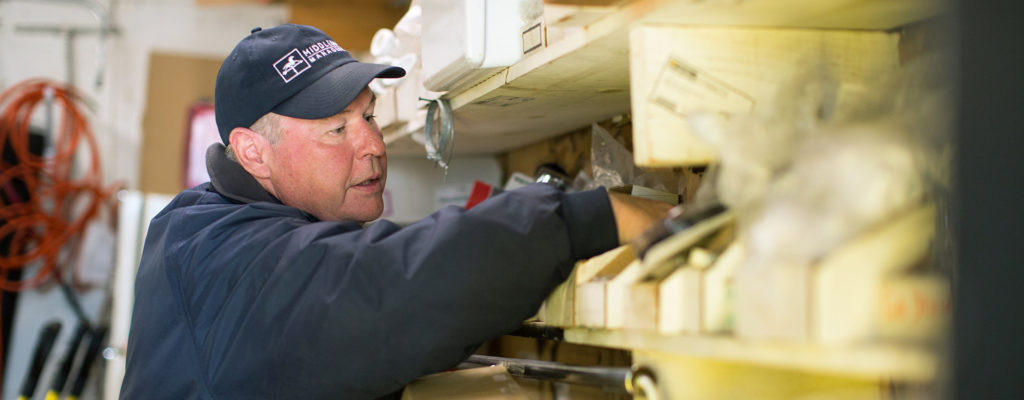
Who it works for
Before Shelters to Shutters, Moma Sayplay was living out of his car, taking classes at Atlanta Tech College during the day and working at McDonalds during the night, using their wifi on his breaks to do homework. After his shift he would find a safe place to park his car to sleep for a few hours and then go to his classes at Atlanta Tech. Having fled war in West Africa with his family at just eleven years old, adolescent years resettled in Georgia had been challenging.
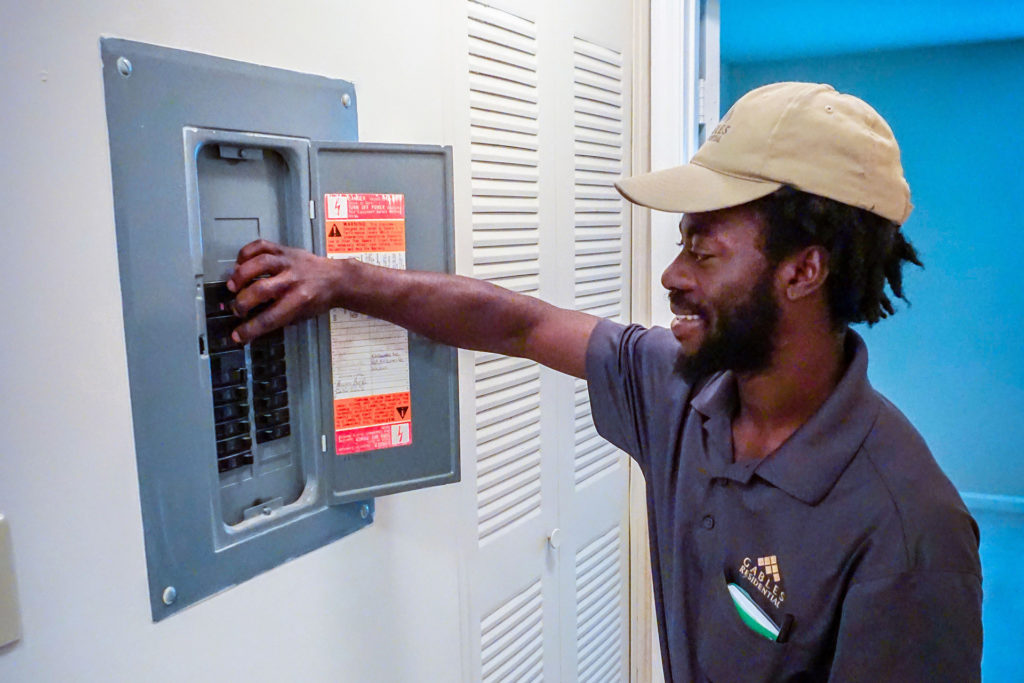
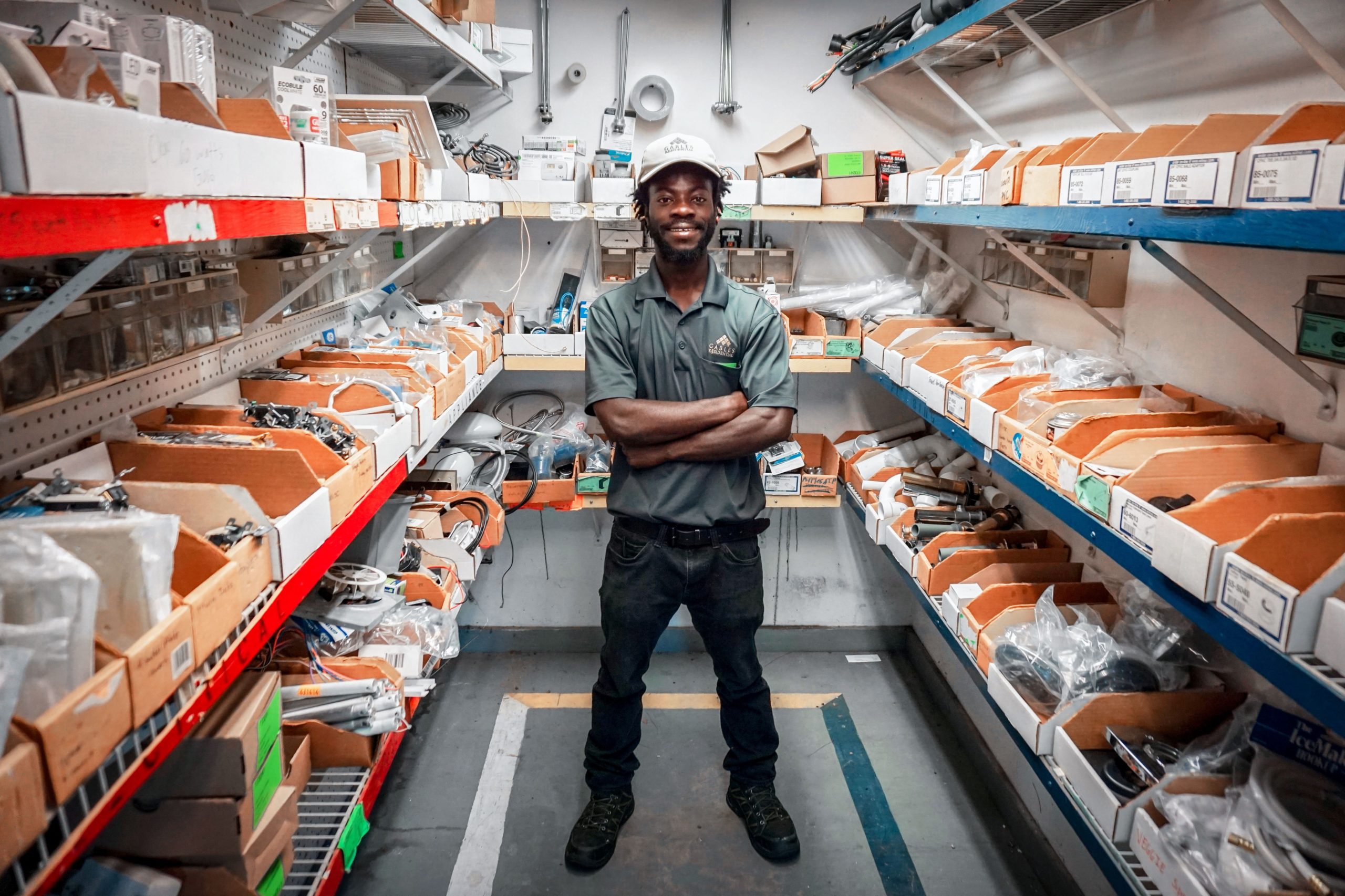
"As a partner of S2S, Atlanta Tech College presented the program as an opportunity to students in need of housing and looking for a career in the apartment industry as a maintenance tech or groundskeeper. It was the perfect opportunity for Moma," says Kristen.
"The Hiring Event was nerve wracking at first," admits Moma, "but once you get over the first initial shock it was great. We had a coach working with us before we even went into the room. They helped me go through my resume and we did a pre-interview run through to help me get my initial nervousness out of the way."
Moma started as a groundskeeper with Gables Residential, a property in midtown Atlanta, and was happy to move from his car into a one-bedroom apartment on the property. Within six months, Moma was promoted to Punch Tech at a larger complex. Today, he continues to take classes as his work schedules permit to reach his goal of obtaining an electrical degree.
Shelters to Shutters catapulted me to a whole other level. Now I have a stable job and my own apartment. I can do school now without stressing about having to park somewhere safe so I can sleep. Now I can go home and have internet service in my house to get my assignments done.
Moma Sayplay, Shelters to Shutters Participant
Joe, on the other hand, was a successful Navy veteran who held a steady thirteen-year career as a machinist. But addiction cost him everything—his job, his relationships, his home.
Mired in addiction, Joe moved in with his sister and tried to pick up the pieces on his own, but continued to spiral. Finally, his sister had enough and said, "You've got to go—you just gotta go."
During his darkest hours, Joe approached his church for help. Joe remembers telling his pastor, "I'm homeless, I need long-term treatment." With support from his faith community and a long-term treatment program, Joe began to recover and change his life.
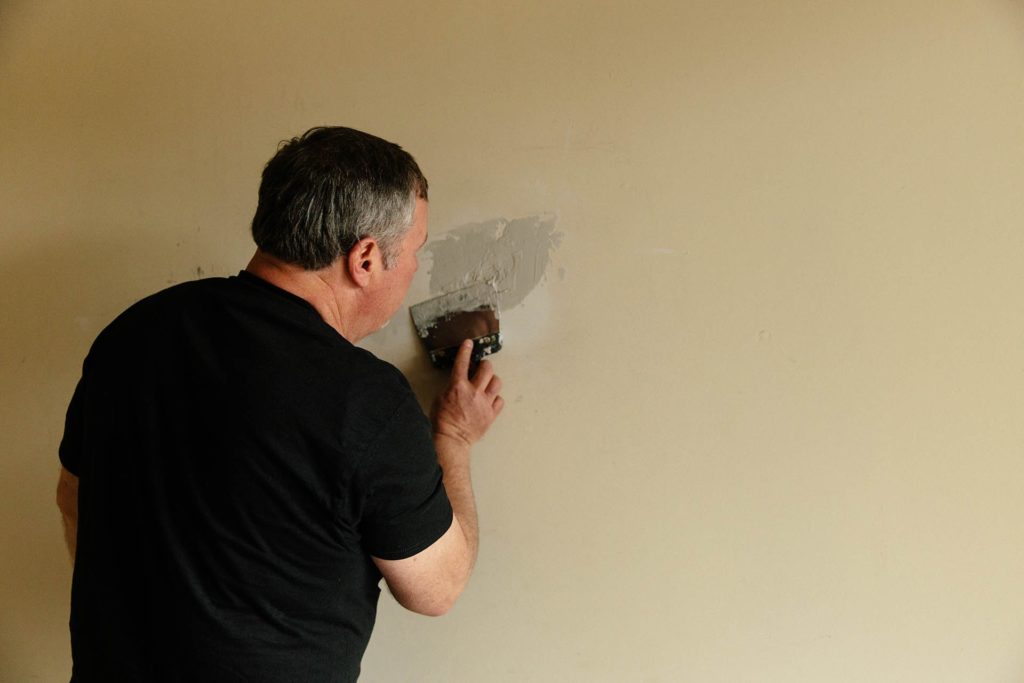
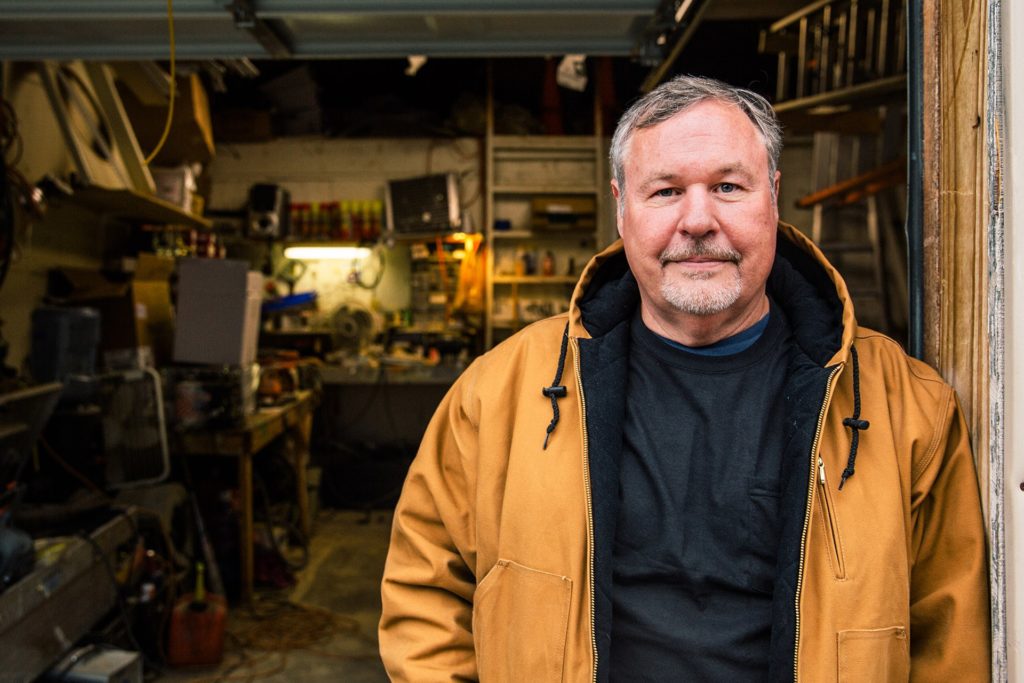
A veterans service provider noticed and recommended him for the Shelters to Shutters program. With a strong drive for employment and professional background, Joe fit the mold. Since then he has worked his way up from a full-time groundskeeper to the position of maintenance technician. His supervisor, Property Manager Leisa VanHoose, says, "Joe is so grateful and genuine. He's got an energy about him that's contagious."
"Shelters to Shutters has given me a career and a nice place to live," Joe states as he proudly shows his new home. "There's a great need for programs like Shelters to Shutters. This journey has been a long and rocky road, but it's turned out really good."
Sayed Mosawi has endured a very different journey. For eight years, he served as an interpreter for the U.S. Military in Afghanistan, on the front lines in Herat for at least two of those years. In recognition of his service, Sayed and his family were provided with an opportunity to come to the U.S.
While Sayed was surprised by the safety and security in the U.S., the transition of learning a new system and way of living has not been easy. Sayed struggled to find jobs that would pay enough for rent. Determined to make a better way for his family, Sayed went to Skillsource, a workforce resource program and partner of Shelters to Shutters. Today, Sayed is thriving as a full time Maintenance Tech II with Shelters to Shutters' industry partner, AvalonBay Communities.

Replicable and ready
Shelters to Shutters is currently operational in twelve cities, including Charlotte, Chicago, Arlington/Alexandria, Baltimore, Houston, Virginia Beach, Raleigh-Durham, Nashville, Austin, Atlanta, Seattle, and DC, though the program can be replicated anywhere and everywhere.
Recognizing the unique aspects of each city's experience with homelessness, Shelters to Shutters is beginning to scale its leadership by building city advisory boards comprised of 15 – 20 community and business leaders to drive fundraising, partnership building, and navigating nuances of their local contexts. The DC board was the first to kick off in June of 2019, followed by the Atlanta and Charlotte board in October, and Nashville by December. Within its first year of operation, each board aims to provide funding for a full time S2S resource dedicated to the local program operations and double the amount of private industry partnerships.
"Creating City Advisory Board's is the next critical milestone for Shelters to Shutters," says CEO Andy Helmer, "We've proven the model. We know it works, but we need local resources on the ground to ensure we keep a pulse on the homelessness landscape in that city, develop and maintain industry and nonprofit partnerships vital to the program and offer more comprehensive case management to support our participants."
Having a committed and passionate group of business leaders on the ground with S2S staff will allow us to accelerate our ability to make a material difference for those experiencing homelessness in each city we operate.
Andy Helmer, CEO
Avalon Bay and Equity Residential in DC were two of the earliest partners, hiring 13 and 5 employees (respectively) through Shelters to Shutters. These jobs are more than entry-level hamster wheels, rather participants are set on career paths in an industry with exceptional training and opportunities for advancement. It's not hard to imagine future company leaders coming through this program -- Maintenance Supervisors, Regional Supervisors. The upward mobility for a career is real, and property management is a professional skill that has value and relevance anywhere.
"It's not only simply us doing the right thing for our community but has been a phenomenal opportunity for us to create this potential pipeline for talent and hiring going forward," says David Neithercut, president and CEO of Equity Residential.
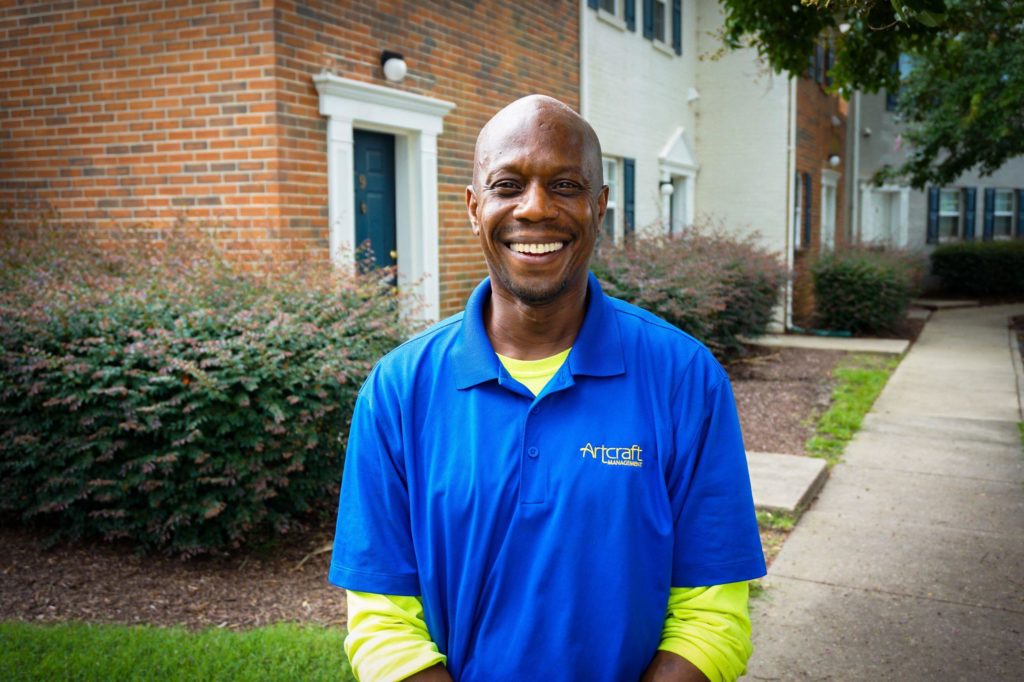
And the proof is in Vonley. He became gang involved at a very young age, which led him like a yo-yo in and out of jail. Now 51-years-old, Vonley is a proud participant in the Shelters to Shutters program, advancing as a maintenance tech in Hampton, VA where he enjoys spending time with his wife, seven children and eight grandchildren.
Having lost his mother while he was incarcerated, he says, "She was the push for me to turn my life around. I wish she was here to see me now so she could see my growth. She inspired it. She was always pushing me to be better. I can't let her down."
After incarceration he enrolled in Thomas Nelson Community College, graduating with a degree in facility management and maintenance. It was there Vonley met Scott Pitts and Shelters to Shutters. "I knew my background was an issue. I started giving up hope, but Shelters to Shutters stayed with me and advocated for me where they could," says Vonley.
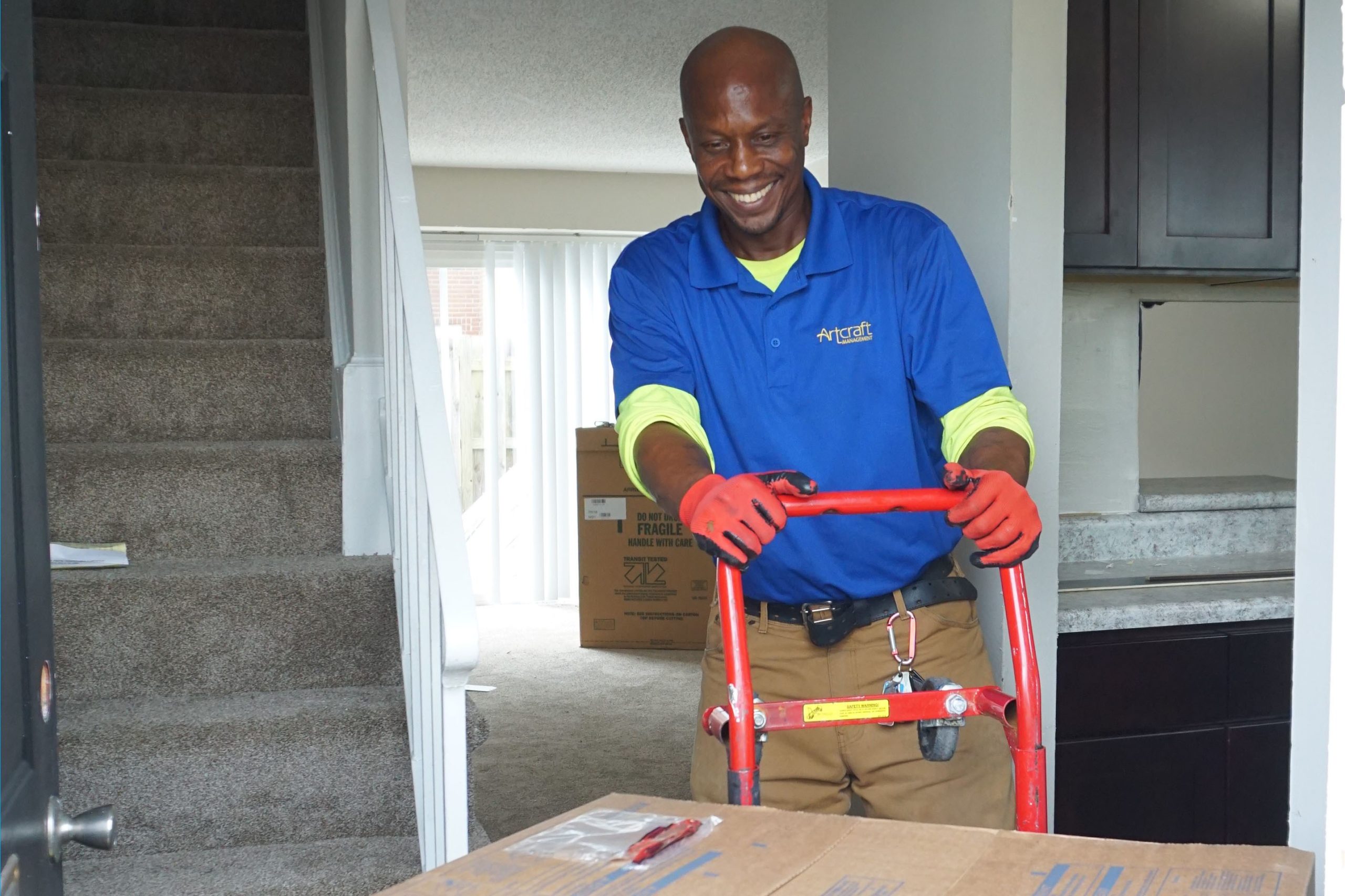
Through a hiring event, Artcraft Management heard Vonley's story and saw that he was motivated and ready to work. "Ms. Shumaker at Artcraft told me she was going to give me a chance. I told her, 'If you give me this opportunity I am going to run with it. I won't let you down.' And, here I am still today. I just received my first raise. It feels great," he remembers.
Now, in addition to advancing his career with Artcraft Management, Vonley is working on his own non-profit called GenerationNext, an effort to prevent young people from gang recruitment and help current members get out. Inspiring and industry-led, a virtuous cycle has begun.
Shelters to Shutters is supported by Stand Together Foundation, which partners with the nation’s most transformative nonprofits to break the cycle of poverty.
Learn more about Stand Together's efforts to make the economy work for all and explore ways you can partner with us.
